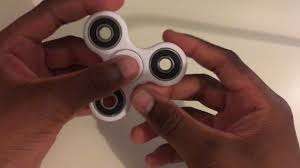Keeping Hands Busy
One of the easiest things I’ve started doing to put participants at ease and make my workshops and meetings more fun and focused is so simple it’s almost laughable. I went out and bought a couple of little plastic bowls, put one on each table in the event space before we get started, and fill them with crayons and markers.
Nothing says “let’s put our creativity hats on” like a big pile of art materials. And while we do actually use them in some of the activities during the session (I’m always incorporating at least one art-type activity in my events), most of the time participants just help themselves and start coloring things in on their agendas or notebooks, sometimes even before the session has started.
Here’s the best part: research strongly shows that having things to fidget with can help participants stay focused!
Yes, there’s a reason the fidget spinner craze is such a craze. While they can be distracting, appropriate use of fidget toys do actually help people stay on task and even help people who may be feeling anxious stay more calm. While my boxes of crayons and markers were an easy gateway for me, I have seen facilitators put out all sorts of items, usually in boxes on tables, for participants to play with.
Here is a list of some items you may want to include in a “fidget box” for participants. I prefer things that don’t make noise or a mess, and that are fairly inexpensive, like:
- Pipe cleaners
- Small containers of playdough
- Smooth stones
- Koosh balls
- Rubix cubes
- Origami paper
- Slinkies
- Stress balls
- Legos
I also like items that can be incorporated into an activity later on – thereby serving double-duty. Legos, like markers and crayons, are a great example, as they can be used in all sorts of visualization and team building activities. (If you’re not already familiar with Lego Serious Play, check it out here.) Same with playdough. Here are a few examples of you can incorporate these manipulatives into a workshop:
- In a team building exercise: Give each team the same number of bricks and then ask them to build the highest lego tower they can, using the fewest number of bricks that they can.
- To visualize concepts: Invite participants to create a form out of playdough that is agitated. Now have them rework the playdough so it represents calm. Now invite them to discuss with a partner how they, personally, make the shift at work from agitated to calm.
- As part of an icebreaker: Ask them to choose one item from the bin that in some way represents them. Now ask them to find a partner, introduce themselves, and discuss why they chose that particular object.
- To pair people or create groups: Ask everyone to choose a pipe cleaner. Now ask people to find someone who has the same color pipe cleaner. This person is now their partner for a discussion prompt or activity.
Here’s another reason to provide fidget objects: If you don’t, people will make their own. And I think someone squishing a Koosh ball is much easier to take as a facilitator than someone endlessly clicking their ballpoint pen, don’t you?
